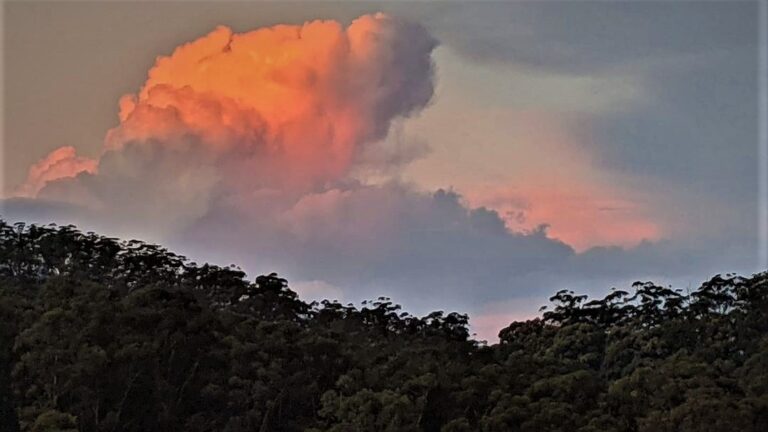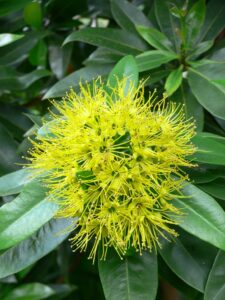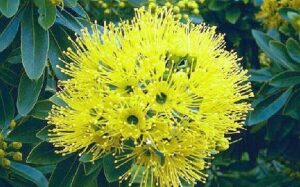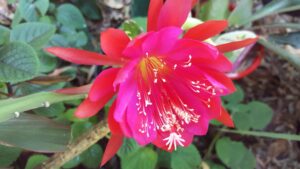image: M. Hunt ‘Storm over Korora’
Is it true that rainfall is more beneficial to gardens than water from a tap?
Quick answer is YES!
It is fully understood that those folk who have had their gardens savaged by recent storms will not think there is ANY benefit at all from storms and rain. The hail was something out of this world where it created a snowfield-like landscape in the subtropical Coffs Coast region.
Putting that aside, this post will discuss the special qualities found in rain and storm rain – looking for the silver lining, so to speak! My research was prompted by a rather doubting relative who didn’t believe that rain is more beneficial than tap water for our gardens – ‘it’s just H2O’.
To Support My View:
Have you ever noticed that during dry spells we frantically water our garden, but nothing beats a fall of rain as afterwards plants take on a cleaner, greener, lusher and ‘fresher’ appearance? The reason being there are marked chemical differences between rainwater and ‘town supply’ tap water – the former being better for our plants.
Why is rainwater better?
Rainwater is rich in nitrogen because the air is rich in nitrogen 78% of the atmosphere. Some nitrogen, in their ammonium and nitrate forms, descend to the earth when rain falls, and immediately the leaves and roots of plants take them in.
Raindrops are also rich in oxygen too which is extremely beneficial when soil is heavily saturated after heavy rain.
Each raindrop absorbs carbon dioxide. When carbon dioxide in rain combines with other atmospheric minerals, the drops become slightly acidic. As soon as these slightly acidic raindrops reach the soil, they facilitate in the release of micro-nutrients like copper, manganese, iron and zinc from the soil – all of which are fundamental in good plant growth.
Lightening effects on rain:
In Spring and Summer storms where there is much lightening activity, the energy generated by that lightening provides enough energy to break down and convert atmospheric nitrogen into reactive nitrogen compounds that support growth directly or indirectly. When this nitrogen is combined with water and oxygen in the atmosphere the resulting rainfall will contain greater levels of nitrates and ammonium.
Further reading can be found from theconversation.com website.
Just as an aside:
As rain comes close and humidity levels increase, chemicals are released and you smell rain. The term ‘petrichor’ was first coined by two CSIRO scientists in the 1960s, who discovered that a compound called geosmin was a key ingredient in the smell of rain.





